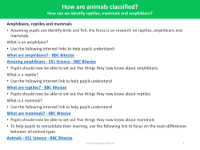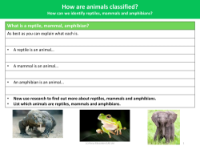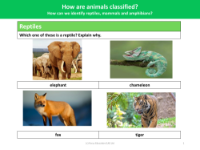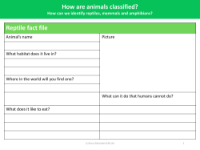Amphibian fact file
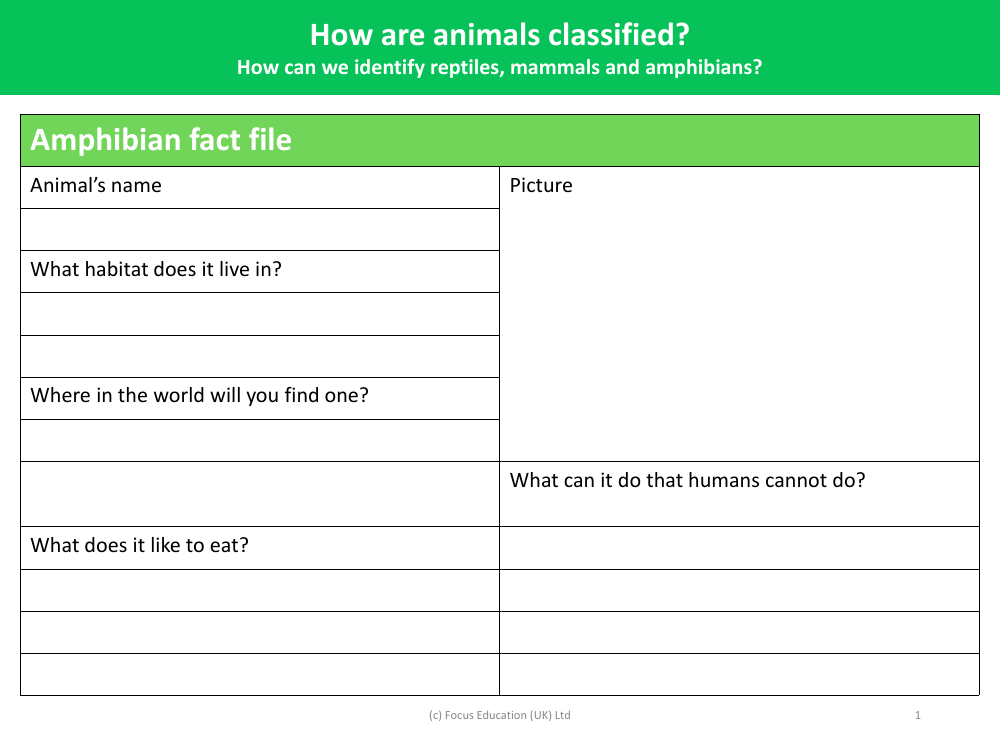
Science Resource Description
When it comes to classifying animals, scientists group them based on shared characteristics and evolutionary history. This classification helps to identify and understand the differences between various animal groups, such as reptiles, mammals, and amphibians. Each group has distinct features that set them apart. For instance, reptiles are cold-blooded, have scaly skin, and lay eggs, while mammals are warm-blooded, have fur or hair, and most give birth to live young. Amphibians, on the other hand, are known for their unique life cycle that includes both aquatic and terrestrial stages, and they typically have moist skin that assists in respiration.
An amphibian fact file is a useful tool to delve deeper into the specifics of these fascinating creatures. It would include the animal's name, alongside a picture for visual identification. The file would detail the habitat in which the amphibian lives, such as wetlands, forests, or streams, and it would specify the regions of the world where the species is found. A key point of interest in the fact file would be the amphibian's abilities that humans lack, such as breathing through their skin or the capacity to undergo metamorphosis. Additionally, the fact file would describe the amphibian's diet, which could range from insects to small fish, depending on the species. This informative profile provides a snapshot of the amphibian's life and ecological role.



